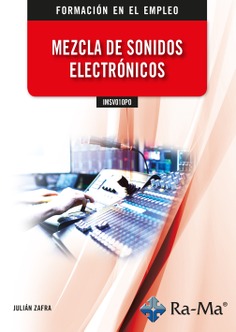(IMSV010PO) Mezcla de sonidos electrónicos
Julián Zafra
El objetivo de este libro es que el lector sea capaz de crear música manejando tanto herramientas y equipamiento como software.
- Escritor
- Julián Zafra
- Colección
- Formación en el Empleo (Especialidades Formativas)
- Materia
- Ingeniería acústica y de sonido
- Idioma
- Castellano
- EAN
- 9788410181342
- ISBN
- 978-84-10181-34-2
- Depósito legal
- M-3992-2024
- Páginas
- 202
- Ancho
- 17 cm
- Alto
- 24 cm
- Peso
- 346 g
- Edición
- 1
- Fecha publicación
- 06-02-2024
616,60 MX$34,18 US$
Índice de contenido
FOREWORD
PRÓLOGO
AGRADECIMIENTOS
Ron McMaster
Tchad Blake
Bob Katz
Mark Needham
Jonathan Wyner
Davis Miles Huber
John Agnello
Michael Leary
Joe Vezzetti
ACERCA DEL AUTOR
INTRODUCCIÓN
CAPÍTULO 1. ¿QUÉ ES LA MEZCLA?
CAPÍTULO 2. FACTORES, APTITUDES Y HABILIDADES CLAVE EN UN INGENIERO DE MEZCLA
2.1 OÍDO
2.2 BUEN GUSTO
2.3 CRITERIO
2.4 CREATIVIDAD
2.5 TÉCNICA
2.6 ACTITUD
2.7 COMUNICACIÓN
2.8 DISCIPLINA
CAPÍTULO 3. FACTORES DETERMINANTES PREVIOS AL PROCESO DE MEZCLA
3.1 ¿QUÉ ES UNA BUENA GRABACIÓN?
3.2 ¿QUÉ ES LO QUE HACE BUENA UNA GRABACIÓN TÉCNICA?
3.3 ARTÍSTICAMENTE CORRECTO
3.4 ES LA MÚSICA, ¡NI LA GRABACIÓN NI LA MEZCLA!
3.5 ¿CUÁLES SON LOS ELEMENTOS DE UNA BUENA MEZCLA?
3.6 EXACTITUD
3.7 DISTINCIÓN ENTRE EL BUEN/MAL SONIDO
3.8 LAS HERRAMIENTAS PUEDEN AYUDARNOS, PERO ESTAS NO HACEN QUE UN TEMA SEA BUENO
3.9 LA IMPORTANCIA DE LOS ARREGLOS EN LA PRODUCCIÓN MUSICAL
CAPÍTULO 4. ELEMENTOS DE UNA MEZCLA
4.1 LA MEZCLA DE AUDIO PERFECTA
4.2 NIVEL
4.3 ECUALIZACIÓN.
4.4 CONSEJOS PARA ECUALIZAR Y DEFINIR MÁS UN INSTRUMENTO
4.5 PANORAMA
4.6 EFECTOS BASADOS EN EL TIEMPO
4.7 DINÁMICA
4.8 ATRACCIÓN/GUSTO/INTERÉS
CAPÍTULO 5. ¿POR DÓNDE COMENZAR A CONSTRUIR UNA MEZCLA?
5.1 BASE
5.1.1 Voz
5.1.2 Clave del ritmo
5.2 OTROS FOCOS DE MEZCLA
CAPÍTULO 6. PEPE LOECHES
6.1 TÉCNICA LOECHES EN MEZCLA
CAPÍTULO 7. MEZCLA DE AUDIO EN LOS DIRECTOS
7.1 LA PRUEBA DE SONIDO
7.2 FACTORES A TENER EN CUENTA
7.2.1 Supervisión y movimiento físico de la microfonía
7.2.2 Ruidos en las diferentes líneas de instrumentos
7.2.3 Estructura de ganancia (Gain Stage)
7.2.4 Otros posibles ruidos
7.2.5 Ruido de fondo (Noise floor)
7.2.6 Distorsión (Clipping)
7.2.7 Pico
7.2.8 RMS
7.2.9 Operación nominal
7.2.10 La relación señal/ruido (S/N)
7.2.11 Headroom
7.2.12 Ganancia de unidad
7.2.13 Ajuste de ganancia
7.3 COMENZAR POR EL MEJOR SONIDO QUE SEA POSIBLE
7.4 SUBE LOS PREAMPLIFICADORES Y MEZCLA CON LOS FADERS
7.5 FILTROS Y PADS
7.6 GESTIÓN DE LA CONFIGURACIÓN DEL ECUALIZADOR
7.6.1 Ecualizador después del preamplificador
7.7 EQUIPO EXTERNO/PLUGINS INTERNOS
7.8 MEZCLA
7.9 ¡CUIDADO CON EL EXCESO DE LOS GRAVES!
7.10 DEMOCRATIZACIÓN EN EL SONIDO
CAPÍTULO 8. MUNDO DIGITAL
8.1 ALGUNAS VENTAJAS Y BENEFICIOS DE LOS ACTUALES
SISTEMAS DIGITALES DE GRABACIÓN
8.1.1 Repetibilidad e inmunidad a la degradación
8.1.2 Fácil operación y automatización
8.1.3 Múltiples funciones en un solo dispositivo
8.1.4 Expansibilidad y conectividad
8.2 FUNCIONAMIENTO DE LOS SISTEMAS DIGITALES.
8.2.1 Frecuencia de muestreo y profundidad de bits
(Sample rate and Bit Depth)
8.2.2 Frecuencia de muestreo (Sample rate)
8.2.3 Profundidad de bits de audio (Audio file bit depth)
8.2.4 DAC (Conversión digital a analógica)
8.2.5 Reducción de bits
8.2.6 Dithering
8.2.7 Downsampling
8.2.8 Jitter
8.3 ESCOGE UN DAW
8.4 LOS PLUGINS DE AUDIO
8.4.1 Procesamiento
8.5 FORMATOS DE PLUGINS DE AUDIO
8.5.1 El término VST (virtual studio technology)
8.5.2 VST2
8.5.3 VST3
8.5.4 AU (unidad de audio)
8.5.5 AAX
8.5.6 TDM (Time-division Multiplexing) — Avid Technology
8.5.7 RTAS (Real Time AudioSuite) — Avid Technology
8.5.8 Standalone.
8.5.9 Plugins de 32 bits frente a plugins de 64 bits
CAPÍTULO 9. ALGUNOS DE LOS ERRORES TÍPICOS EN LAS MEZCLAS
9.1 TIEMPO
9.2 AFINACIÓN
9.3 DESALINEACIÓN DE FASE
9.4 JUICIOS ERRÓNEOS EN LA TONALIDAD GLOBAL DE LA MEZCLA
9.5 NO TENER UNA DECISIÓN DECIDIDA EN CUANTO A LA DIRECCIÓN DE LA MEZCLA
9.6 PENSAR EN CANTIDAD NO EN CALIDAD
9.7 NO SE DEDICA SUFICIENTE TIEMPO A CONSTRUIR EL AMBIENTE
9.8 CONFIAR DEMASIADO EN LOS EFECTOS
9.9 SONIDOS Y BALANCEAMIENTOS NO NATURALES
9.10 EXCESO DE CONFIANZA DE CONVENCIÓN
9.11 NO RESPETAR LA CONVENCIÓN
9.12 MEZCLA SUCIA Y CONFUSA
9.13 VOCES SILBANTES
9.14 MEZCLAS DELGADAS
9.15 ARREGLOS NO ADECUADOS.
9.16 PLATILLOS Y CHARLESS RUIDOSOS CON EXCESIVO VOLUMEN
9.17 NO EMPLEAR ADECUADAMENTE LA AUTOMATIZACIÓN
9.18 EVITA PRESETS DE MEZCLA
9.19 UNA REVERBERACIÓN INADECUADA
9.20 MEZCLAR SIN CAMBIAR DE PERSPECTIVA DE LA ESCUCHA
9.21 DUREZA/ASPEREZA
9.22 DETALLES ENTERRADOS Y NO PRESENTES
9.23 DÉBIL COMPENSACIÓN DEL BALANCE
9.24 ESTRUCTURA DE GANANCIA INADECUADA EN EL BUS MASTER
9.25 EL ATAQUE DEL COMPRESOR ESTÁ AJUSTADO DEMASIADO RÁPIDO (BUS MASTER)
9.26 USO DE MULTIBANDA (BUS MASTER)
9.27 NO TE PREOCUPES, ESTO YA LO ARREGLAMOS EN LA MEZCLA
9.28 EL DISCO ME LO GRABA/MEZCLA UN AMIGO EN SU ESTUDIO
CAPÍTULO 10. PRE-MEZCLA
10.1 INTERACCIÓN CON EL ARTISTA/PRODUCTOR
10.1.1 COMUNICACIÓN CON EL CLIENTE Y DETERMINAR QUE CLASE DE MEZCLA SE VA A REALIZAR
10.2 GESTIÓN DE LOS PROYECTOS
10.2.1 Ordenar las sesiones
10.2.2 Archivos/pistas validas
10.3 ELECCION DE LOS ARREGLOS
CAPÍTULO 11. REAMPING
11.1 PASOS
11.2 FASE
11.3 COMBINACIÓN DE LA SEÑAL ORIGINAL Y LA REAMPLIFICADA
CAPÍTULO 12. GRABACIONES CLÁSICAS
12.1 ASÍ SE HIZO
CAPÍTULO 13. HERRAMIENTAS Y PASOS EN EL PROCESO DE MEZCLA
13.1 ESTRUCTURA DE GANANCIA (GAIN STAGING)
13.2 HEADROOM
13.2.1 ¿Qué es el espacio de headroom libre?
13.2.2 Cómo aplicar la estadificación de ganancia a tus mezclas
13.3 ERRORES COMUNES EN EL AJUSTE DE LA ESTRUCTURA DE GANANCIA
13.3.1 Error 1: No entiendo lo que es ajustar la estructura de ganancia
13.3.2 Error 2: obsesionarse con la estructura de la ganancia
13.3.3 Error 3: No arreglar la estructura de ganancia de los buses de mezcla
13.3.4 Error 4: No igualar el nivel de tus plugins
13.3.5 Error 5: Gastar tu dinero duramente apostando por una correcta y adecuada estructura de la ganancia mediante plugins externos
13.3.6 Error 6: Mantener tus faders muy bajos
13.4 AUTOMATIZACIÓN DE LA GANANCIA DE CLIP
13.4.1 Aplicar automatización de ganancia de clip
13.5 BUSES
13.5.1 Bus Routing
13.5.2 Bus Compressor
13.5.3 Automatización de bus
13.5.4 Master Bus
13.5.5 Panorama
13.5.6 Ecualización
13.6 REVERBERACIÓN (ESPACIO Y AMPLITUD)
13.6.1 Tamaño
13.6.2 Tono
13.6.3 Amplitud
13.6.4 Sostenimiento.
13.6.5 Mezcla/Homogeneidad/Profundidad
13.6.6 Mono vs Stereo
13.7 DELAYS
13.8 DISTORSIÓN (CARÁCTER)
13.9 COMPRESIÓN
13.9.1 Algunos tipos de comportamiento de los compresores
13.9.2 Feedback compressor
13.9.3 Feed-Forward compressor
13.10 TÉCNICAS DE COMPRESIÓN.
13.10.1 Bus Compression
13.10.2 Compresión Paralela/New York.
13.10.3 Compresión en serie
13.10.4 Compresión Sidechain
13.10.5 Ducking Technique
13.11 BRAUERIZE
13.12 ACTIVACIÓN DEL PLUGIN DELAY COMPENSATION
CAPÍTULO 14. AUTOMATIZACIÓN
14.1 COMO ESCRIBIR UNA AUTOMATIZACIÓN
14.2 MODOS DE AUTOMATIZACIÓN
CAPÍTULO 15. MONITORES.
15.1 LA ELECCIÓN DE LOS MONITORES
15.1.1 Activos vs pasivos
15.1.2 Calibración de los altavoces
15.1.3 La Ley del primer frente de onda
15.1.4 Auriculares frente a los Altavoces. Pros y contras
15.2 VOLUMEN DE ESCUCHA EN MEZCLA
CAPÍTULO 16. SUMADORES
16.1 ALGUNOS DE LOS BENEFICIOS DE LA SUMA ANALÓGICA
CAPÍTULO 17. PREPARACIÓN DE LA MEZCLA PARA EL MASTERING
17.1 HEADROOM
17.1.1 No comprimir/limitar demasiado la mezcla
17.1.2 Solo de pista de voces/instrumentos.
17.1.3 Los graves
17.1.4 El silbido
17.1.5 Espacio de segundos
17.1.6 Dithering.
17.1.7 Función de normalización en el Bounce
17.1.8 Stems
17.1.9 Discos de referencia
17.1.10 Últimos retoques y escuchas externas
17.1.11 Mezclas de referencia
17.1.12 Escucha mediante auriculares.
CAPÍTULO 18. ALGUNOS CONSEJOS DURANTE LOS PROCESOS DE MEZCLA
18.1 EMPIEZA LA MEZCLA CON EL OÍDO FRESCO
18.2 TEN VARIOS MONITORES DE REFERENCIA, COMBINAR LOS MAS CAROS JUNTO CON LOS MÁS ASEQUIBLES Y DE BAJA CALIDAD
18.3 IMPORTA OTRAS MEZCLAS COMO REFERENCIA PARA REALIZAR PLANOS DE COMPARATIVAS ENTRE NUESTRAS MEZCLAS Y OTRAS COMERCIALES MEZCLADAS POR OTROS PROFESIONALES
18.4 INTENTA SIEMPRE ATENUAR EN VEZ DE INCREMENTAR EN LA EQ
18.5 LLEVA UN ORDEN LÓGICO EN LOS PROCESOS DE MEZCLA
18.6 ACTIVA/DESACTIVA LOS PLUGINS
18.7 CÓGETE UN DESCANSO
18.8 INTEGRA EL SONIDO DE BATERÍA EN LA MEZCLA
18.9 ENTRÉGATE EN CADA MEZCLA COMO SI ESTA FUERA NUESTRO MEJOR TRABAJO
18.9.1 Captando la atención del oyente
18.9.2 Realiza planos de comparativa entre varios siste mas de escucha
18.9.3 Se escucha mediante los oídos, no con la vista
18.9.4 Comprueba la compatibilidad de la mezcla en mono
18.9.5 Mantente abierto de mente ante cualquier compromiso o modificación
18.9.6 Guarda las nuevas versiones de mezcla
18.9.7 No comiences a mezclar sino estas preparado, tienes prisa o te sientes obligado a hacerlo
18.9.8 La mezcla es infinita, esta jamás se termina, si no que se abandona
CAPÍTULO 19. ALGUNOS TRUCOS PARA LAS MEZCLAS.
19.1 ECUALIZACIÓN
19.2 HIGH PASS-FILTER
19.3 PANORAMA
19.4 REVERB
19.5 DELAY
19.6 DISTORSIÓN
19.7 PITCH
19.8 PITCH SHIFTER
19.9 CHORUS
19.10 TEMPO
19.11 PHASE
19.12 TREMOLO
19.13 DE-ESSER
19.14 COMPRESOR
19.15 LIMITER
19.16 GATE
19.17 VOLUMEN
19.18 LOOPS
19.19 TRANSIENT DESIGNER
19.20 EDICIÓN
19.21 AUTOMATIZACIÓN
19.22 DUPLICATE
19.23 SAMPLER
19.24 RECETARIO DE ECUALIZACIÓN
Libros relacionados

(IMSV013PO) El Sonido en directo
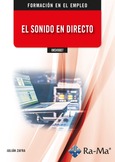
(IMSV0007) El Sonido en directo
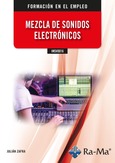
(IMSV0016) Mezcla de sonidos electrónicos
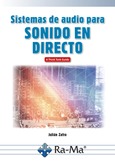
Sistemas de audio para sonido en directo
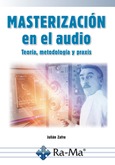
Masterización en el audio
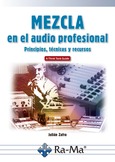
Mezcla en el audio profesional
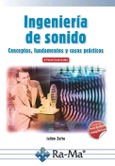
Ingeniería de Sonido. Conceptos, fundamentos y casos prácticos
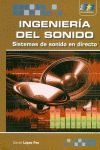
Ingeniería del Sonido. Sistemas de sonido en directo

Edición de audio con Adobe Audition. Curso práctico

